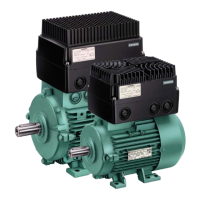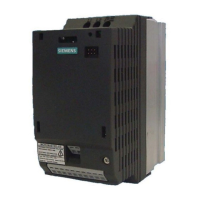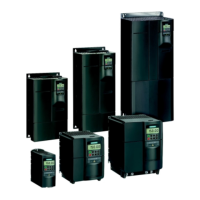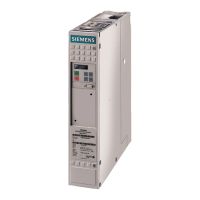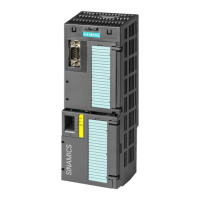,QWHUQDWLRQDO(QJOLVK &20081,&$7,216
MICROMASTER 420 Reference Manual
Issue A1
55
7HOHJUDPVWUXFWXUH
$'5
Bit 5 must be set to 1, other bits should be set to 0 (equivalent to slave
address 32 (dec)).
3.: The PKW area must be ZRUGVORQJ. As a minimum the first word has
to have bits 15, 2 and 1 high and the second word has to have bits 15
and 0 high. Words 3 and 4 are not evaluated. This gives the following
PKW telegram: (hex). This is defined in the USS
specification. You could also send FFFF FFFF FFFF FFFF in the PKW
area as this sets the necessary bits.
1RWH
The PKW cannot be used for reading or writing parameter values in Broadcast
mode.
3='
Both PZD words are used as normal, and all inverters react
simultaneously to the command and setpoint.
No reply telegram is generated by the LQGLYLGXDO slaves in response to a broadcast
telegram.
3.3.9 Parameter settings on MICROMASTER 420 for USS
The MICROMASTER 420 has two possible serial interfaces which can be used for
USS communication: RS232 and RS485. The RS232 is realized using an option
module (order no. 6SE6400-1PC00-0AA0). The RS485 interface uses terminals
14 and 15 for P+ and N- respectively.
In the parameter documentation, USS via RS485 is sometimes referred to as
USS2 while USS via RS232 is referred to as USS1. In each case the telegram
structure is the same. The USS parameters usually contain two indices, index 0
for RS485 and index 1 for RS232.
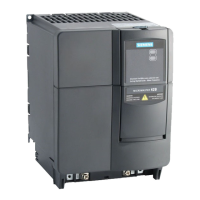
